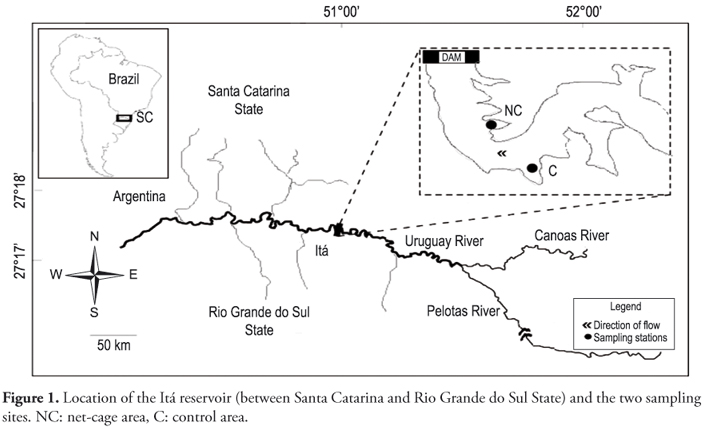OBJECTIVES: This study aimed to verify the influence of net-cage fish farming on zooplankton biomass in the Itá reservoir (Uruguay River, Brazil). METHODS: Samples were collected monthly from October/2009 to May/2010 at the surface and at the bottom in two sampling stations, the net-cage area and in a control area using a Van Dorn bottle and a plankton net (68 µm). RESULTS: The Cladocera and Copepoda biomass was estimated by dry weight using a micro-analytical balance, and the Rotifera biomass by Biovolume. Total zooplankton biomass varied between 6.47 and 131.56 mgDW.m-3 Calanoida copepod presented the highest value of biomass (127.56 mgDW.m-3) and rotifers, despite having an important contribution to total density, showed a maximum biomass of 2.01 mgDW.m-3. Zooplankton biomass at the net-cage area surface was higher when compared with the control area during the months of October to January. However, the zooplankton biomass was similar at the bottom of the two areas throughout the studied period. From February until May, zooplankton biomass decreased in both sampling stations, a fact probably associated with the flushing of the reservoir, followed by an increase in water transparency and a decrease in chlorophyll-a concentration in the following months (February to May). CONCLUSIONS: The influence of fish farming on zooplankton biomass was detected at the surface of the net-cage area only from October to January. From February to May this influence was not found, probably by the influence of the flushing of the reservoir.
Zooplankton; dry weight; net cage; reservoir









